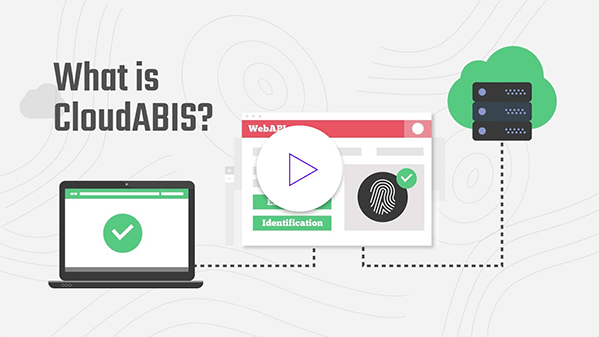The Dark Side of IoT: Cybersecurity Risks and How to Prevent Them
Technology keeps the world revolving around itself. Be it artificial intelligence, machine learning, blockchain, cloud computing, or the Internet of Things (IoT), these terms and technologies are weaving into the fabric of modern life.
Smart devices powered by IoT now manage everything from home security to industrial operations. Yet, as their reach keeps expanding, this convenience comes at a steep price: a sprawling attack surface that hackers capitalize on with alarming creativity. IoT devices are multiplying faster than we can secure them. There are hidden vulnerabilities in our connected world. Let’s look into how we can demystify these vulnerabilities to arm ourselves with defenses.
Understanding IoT Cybersecurity Risks
Here are some key factors contributing to IoT device vulnerability:
-
Weak Authentication Protocols
One of the most common vulnerabilities in IoT devices is the use of weak or default passwords. Many devices come pre-configured with simple. For instance, “admin” or “password” are easily guessable credentials. Even when users change these defaults, they often choose weak passwords susceptible to brute-force attacks. Lack of strong authentication creates an open door for hackers to gain unauthorized access to the device. They can then access the entire network connecting to your device.
-
Infrequent Firmware Updates
Neglecting timely firmware upgrades is yet another issue. Smartphone and computer users get regular security updates. However, we cannot say the same about IoT users. Most of the time, IoT devices depend on the manufacturer to issue updates. Several manufacturers either elect not to provide timely updates or stop supporting older devices. As a result, IoT devices become more open to new vulnerabilities while hackers perpetually create and implement new ways to exploit unprotected systems.
-
Limited Processing Power and Memory
Size reduction, energy efficiency improvement, and cost-cutting are critical to the design of many IoT devices. Such restrictions, however, inhibit the provision of powerful computing and complex security features. These include real-time threat detection and multi-layer encryption. IoT systems tend to be more vulnerable to security breaches than powerful computers.
-
Interconnected Nature of IoT Ecosystems
IoT devices communicate with each other, bringing convenience and a high-security risk. Once you crack your way into one device, you can easily access the other devices and systems in a network or organization. An interception on the network makes any possible security breach much more dangerous than with isolated devices.
-
Lack of Built-in Security Features
IoT devices focus primarily on functionality and cost efficiency instead of security. They lack basic security features like encryption, secure boot processes, or intrusion detection systems. The compromise to security makes them easy targets for cybercriminals. These hackers exploit these weaknesses and gain access to sensitive data, utilizing these devices as entry points to infiltrate large networks.
How to Prevent IoT Security Risks?
It’s essential to assess risks upfront when developing IoT products. Each new device you add to a network represents a potential vulnerability. The entire ecosystem is at risk without proper safeguards. Here’s what you can do to strengthen security:
-
Building Private Networks
A private IoT environment can significantly enhance security by keeping devices within a controlled network, reducing exposure to cyber threats. Public networks expose IoT communications to cyber threats. In contrast, private networks restrict access. This reduces the risk of interception and unauthorized breaches. Restricting access to only authorized users via private networks and implementing strong authentication measures prevent unauthorized intrusions.
Private networks also allow for tailored security policies, providing better protection against botnet attacks. These policies also ensure compliance with GDPR (General Data Protection Regulation) and HIPAA (Health Insurance Portability and Accountability Act). Since data remains within a private infrastructure, the risk of breaches is lower than in public networks.
Additionally, you must isolate your IoT networks. By segmenting your private network, you limit an attacker’s access. This way, even if hackers access one of your systems, they won’t be able to infiltrate the whole organization. It will also be easy for you to contain the breach.
-
Regular Firmware and Software Updates
Manufacturers must ensure their IoT devices receive frequent security updates and patches. Users should enable automatic updates when available to protect their devices against newly discovered vulnerabilities. If a manufacturer no longer supports your device, you must replace it with a more secure alternative. Security updates help patch known exploits that hackers commonly use to gain control of devices, so they are an essential part of any IoT security strategy.
-
Strengthen Authentication Measures
Users should immediately change default passwords on IoT devices and replace them with strong, unique passwords. Any implementation of two-factor authentication (2FA) enhances security. Specific high-security applications could benefit from biometric authentication and relieve their reliance on primary password-based access. Strong authentication assures that even if the login credentials are compromised, the attacker cannot get unauthorized access to the device or network.
Endnote
Any security holes in IoT can jeopardize individual and organizational interests, putting them at risk of data breaches or network infiltration. However, IoT can be safe for everyone with timely and directed performance actions such as strengthening authentication, keeping the firmware updated, ensuring a secure network, and educating the user. Read the points above to expand your understanding of the safe use of IoT and safeguard your valuable data.











